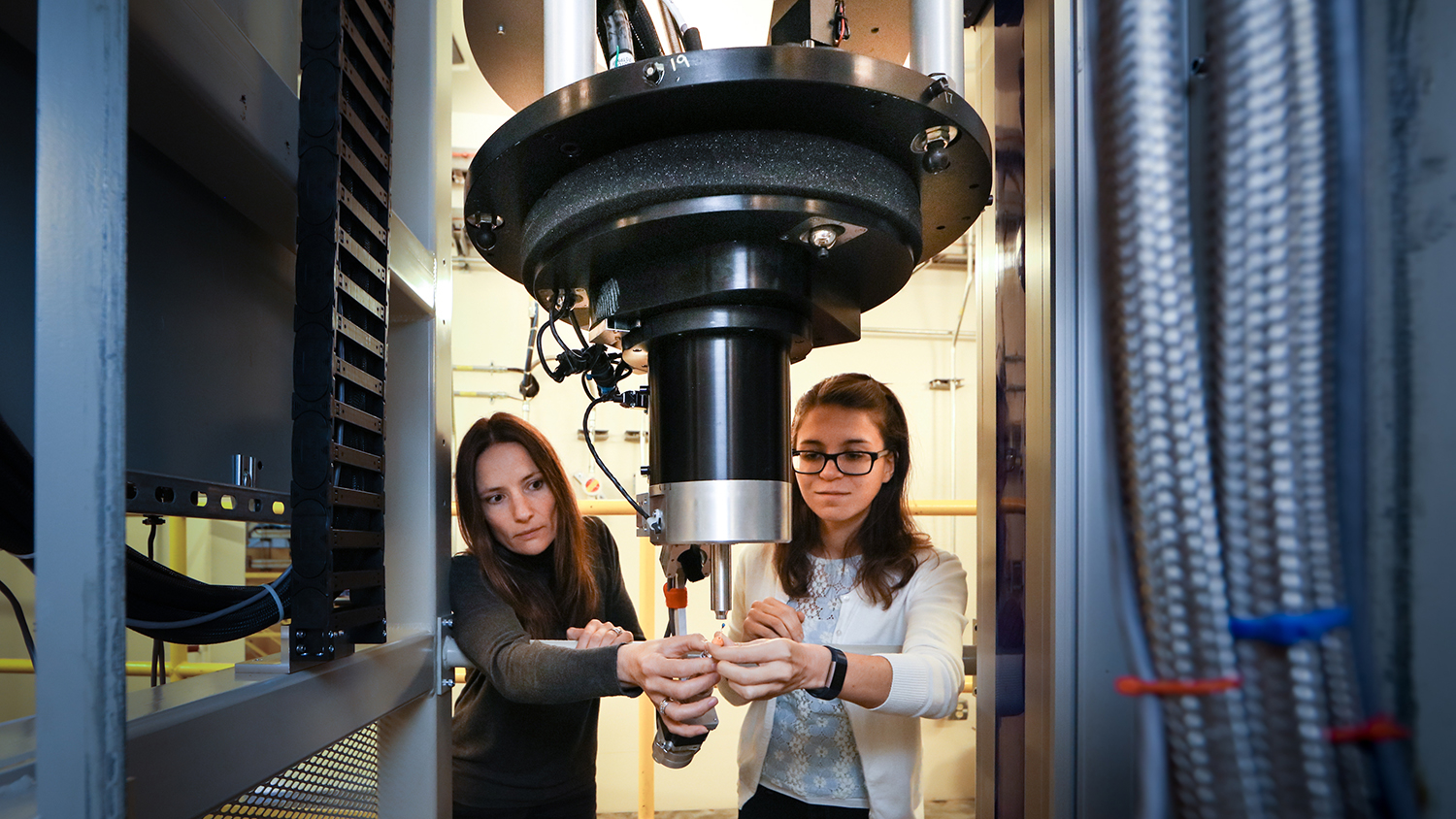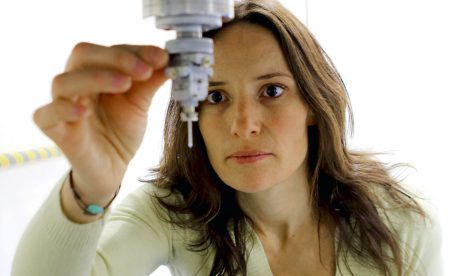Chasing Better Biofuels: Biochemistry’s Flora Meilleur

Imagine that every day, your job is to use one of the most intense beams of neutrons in the world to figure out solutions to some of the biggest challenges of our time.
That’s Flora Meilleur’s career. An associate professor in the Department of Molecular and Structural Biochemistry, Meilleur also works at Oak Ridge National Laboratory. Located in Tennessee, the laboratory is home to two premier neutron research facilities. Meilleur uses those to study a recently discovered enzyme – one of the microscopic machines that make things happen on a molecular level – involved in the breakdown of cellulose.
A component of plant cell walls, cellulose is the most plentiful natural organic compound on the planet. Scientists are eager to develop ways to access glucose, the cellulose building block, to make affordable, sustainable biofuel. Figuring out how to make new materials from cellulose could also relieve environmental concerns around single-use plastic products, like straws and grocery bags.
“The more we know how nature works, the better we will be at coming up with solutions,” Meilleur says.
How does being a biochemist affect how you see the world around you?
 The complexity of living things is mind-blowing to me. The chemistry that’s happening in our cells as we speak, all those enzymes that have to be coordinated for cells to communicate – it’s incredible.
The complexity of living things is mind-blowing to me. The chemistry that’s happening in our cells as we speak, all those enzymes that have to be coordinated for cells to communicate – it’s incredible.
I am doing fundamental research because I want to understand biological processes at the atomic scale. I have the big picture in mind, but I’m interested in the smallest components.
… And then in my research on cellulose-“chewing” enzymes, I want to advance the field. It’s a competitive field, and I want to find the next answer before competing groups do.
Biochemistry is competitive?
To what extent it is competitive depends on what you study, but yes, it is.
For example, the enzymes I’m looking at were just discovered about ten years ago. … When I developed my research project in 2012, there were very few groups around the world working on these enzymes. But as scientists realized the potential of these enzymes, the number of publications grew rapidly. … In 2017, we published a seminal paper based on seeing the position of hydrogens in our neutron work, and were able to make new hypotheses on how those enzymes work and which amino acids may be important. But until our paper was published, we were anxious that we would be scooped!
So it’s exciting, but it’s stressful because you always tell yourself, “I have to finish this study before somebody else does.” At the same time, competition is healthy: if you are doing research that other groups are also pursuing, that’s a good sign.
Wow – so there’s a lot of urgency.
There is, at multiple levels. For graduate students, for example, it is important to rapidly publish results. Seminal publications can help students secure their next position, whether in academia or in industry. For faculty, publication record may influence the result of grant applications.
What are you currently researching?
I’m interested in understanding how enzymes work at the atomic level. … The enzymes I’m looking at derive from fungi growing on dead plants and are able to degrade cellulose to make glucose. These organisms use glucose as their primary source of carbon and energy – as food. I’m investigating how these enzymes make them more efficient so that we can, for example, reduce the cost of processing cellulose.
How do you go about studying that?
When an enzyme catalyzes a chemical reaction, it transfers atoms to and from the molecule it acts on, called the substrate. … In order to understand this atomic reorganization, I use a technique called crystallography. It allows us to build three-dimensional models of enzymes. These models reveal the precise arrangement of atoms in the protein and the substrate. Our goal is to understand which groups in the protein are important in this atomic reshuffle.
Both X-ray and neutron radiation can be used to perform a crystallography experiment. For X-ray crystallography, we can use the X-ray generator in Polk [Hall]. Models built using X-ray crystallographic data give us very precise information on the position of carbon, oxygen, nitrogen and sulfur atoms – the main atoms proteins are made of. That’s a great technique, but … there’s one type of atom missing from these x-ray crystallography models: hydrogen. That is a drawback when studying enzyme chemistry because hydrogens are often the atoms that are moved around. In order to “see” hydrogen atoms, neutrons rather than X-rays must be used.
The partnership with Oak Ridge National Laboratory is central to my research because there, I can use the two neutron sources to collect data that will contain information on the position of all the atoms in the system I am interested in.
Our faculty Think and Do the Extraordinary every day.
This post was originally published in College of Agriculture and Life Sciences News.